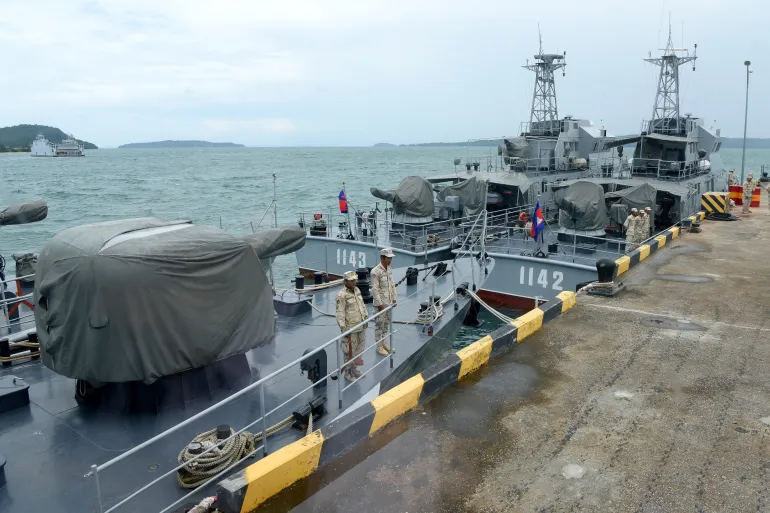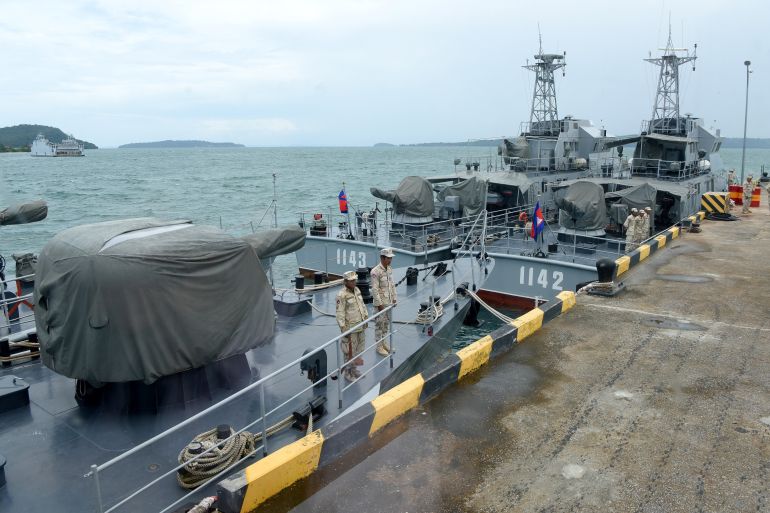China and Cambodia hold first naval drills in Cambodian waters

Exercises underline deepening relationship between Phnom Penh and Beijing, which has expansive claims in the South China Sea.

China and Cambodia have begun their first-ever naval drills in Cambodian waters.
The Chinese Ministry of National Defence said the drills — dubbed China-Cambodia Golden Dragon 2023 — involving personnel from the People’s Liberation Army (PLA) Southern Military Command began on Sunday.
The Chinese navy ship Jinggangshan, which brought the troops to Cambodia, carried out an exercise with two patrol boats of the Royal Cambodian Navy and established communications before practising coordinated navigation in different formations, the Chinese state-run Global Times reported on Monday, citing the PLA command.
The Jinggangshan is a Type 071 landing ship that travelled to Cambodia from Zhanjiang in southern China.
“In the two-hour navigation and communication exercise with the Cambodian navy, our organisation and command were precise, coordination was close, and communications were smooth,” Captain Xu Jinfeng, the commanding officer of the Jinggangshan, said in a report by state-run China Central Television (CCTV).
The Golden Dragon exercises will continue until April 8 and include more than 3,000 personnel and 300 vehicles from both sides, according to Chinese state media.
Cambodia’s deepening relationship with China has raised concern in the United States and Australia, as well as among some of its neighbours in Southeast Asia who, like China, have claims to the South China Sea.
In 2022, the two countries agreed on a two-year Chinese-funded project to revamp Cambodia’s Ream naval base on the Gulf of Thailand, and Phnom Penh has since dismantled facilities there that were built partly with money from the US.
China has been increasingly assertive over its claim to almost the entire South China Sea despite a 2016 international court ruling that found its so-called ‘nine-dash line’ to be without merit.
It has turned rocky outcrops into military posts and deployed its maritime militia and coast guard.
Last month, the Philippines lodged a diplomatic protest after calling on China to cease “aggressive activities” after the Chinese coastguard used a “military-grade laser” to try to block one of its ships at Second Thomas Shoal in the South China Sea.
The dispute over the resource-rich waters — and Phnom Penh’s close relationship with Beijing — has sometimes proved a source of friction in Cambodia’s relationship with other members of the Association of Southeast Asian Nations (ASEAN).







